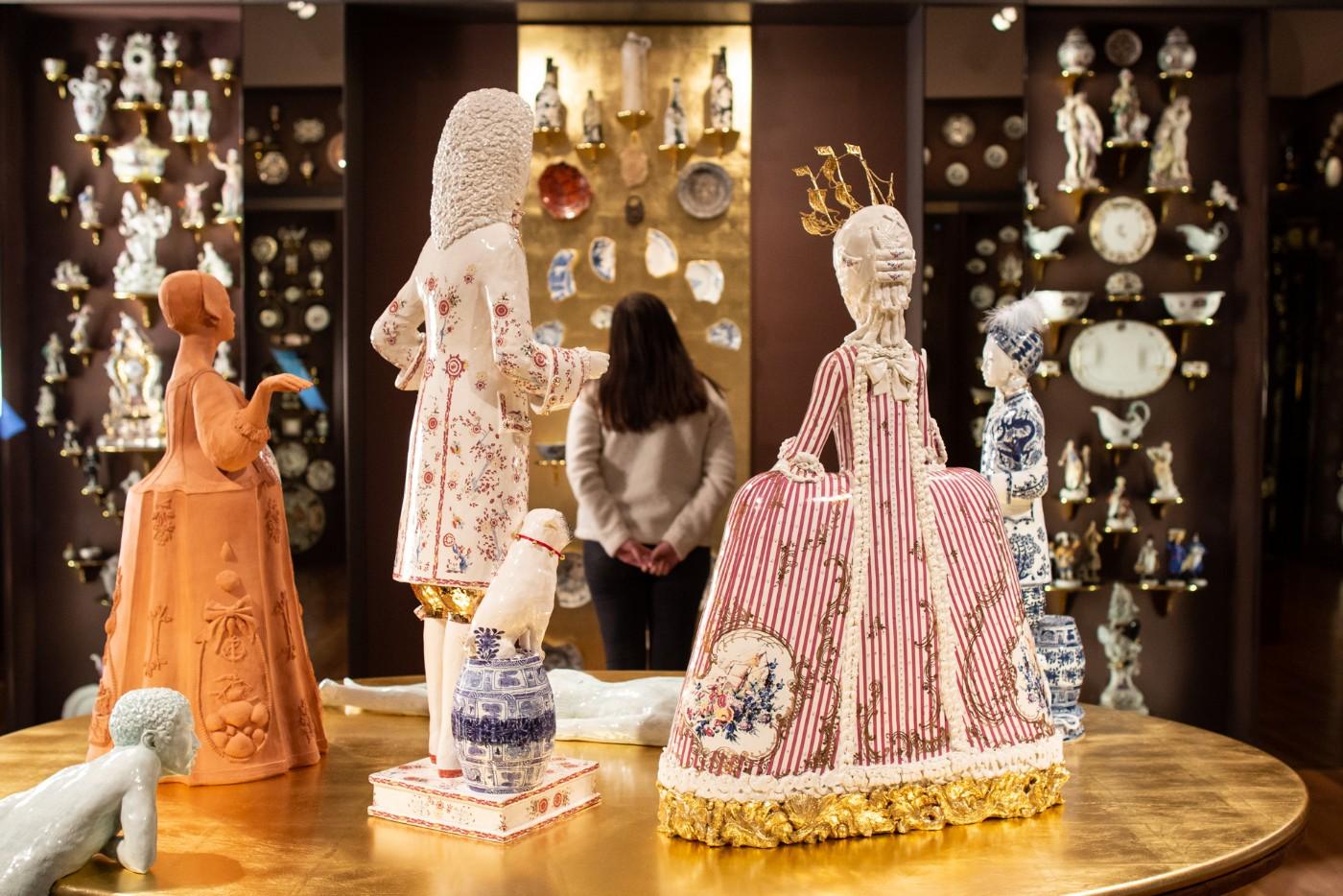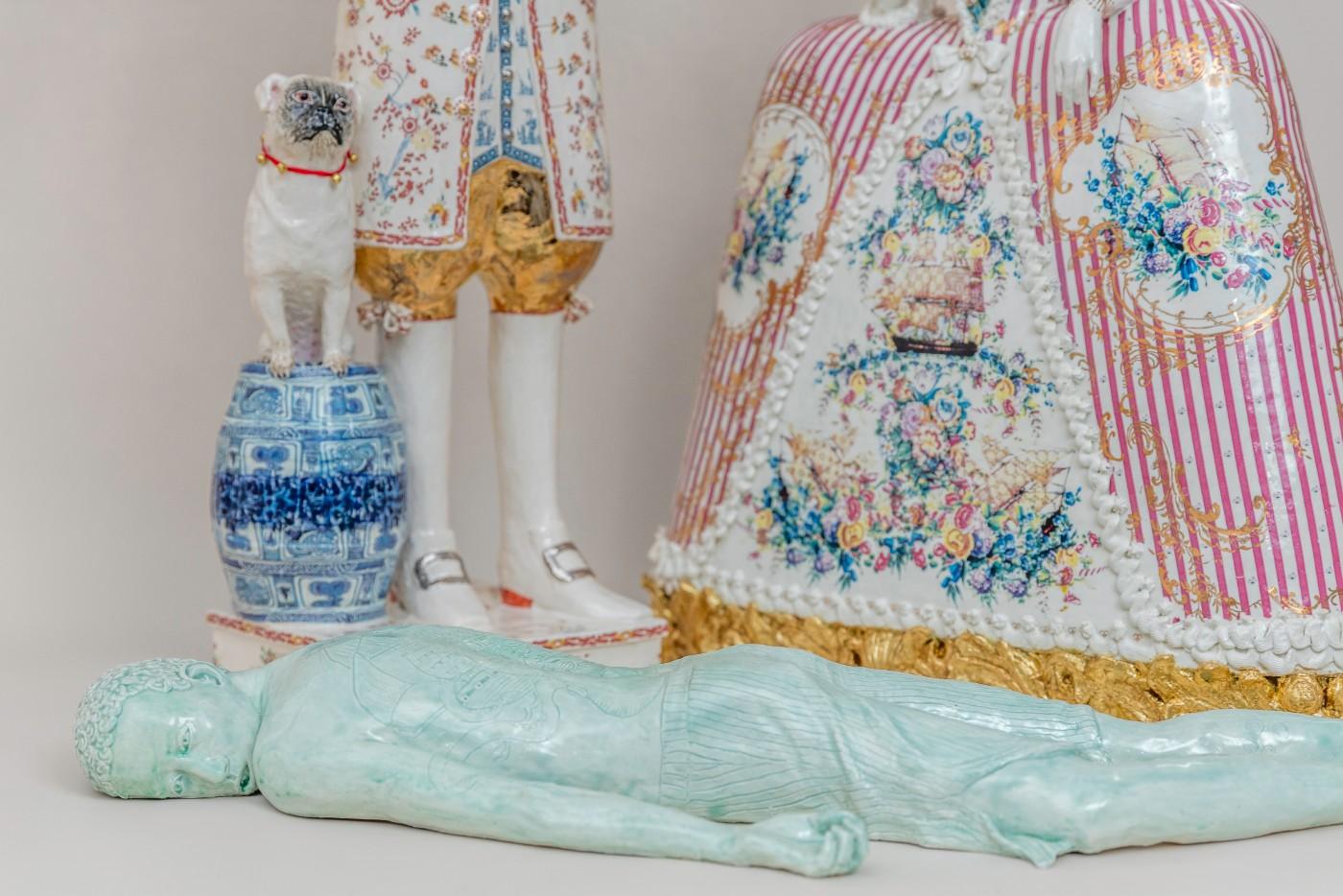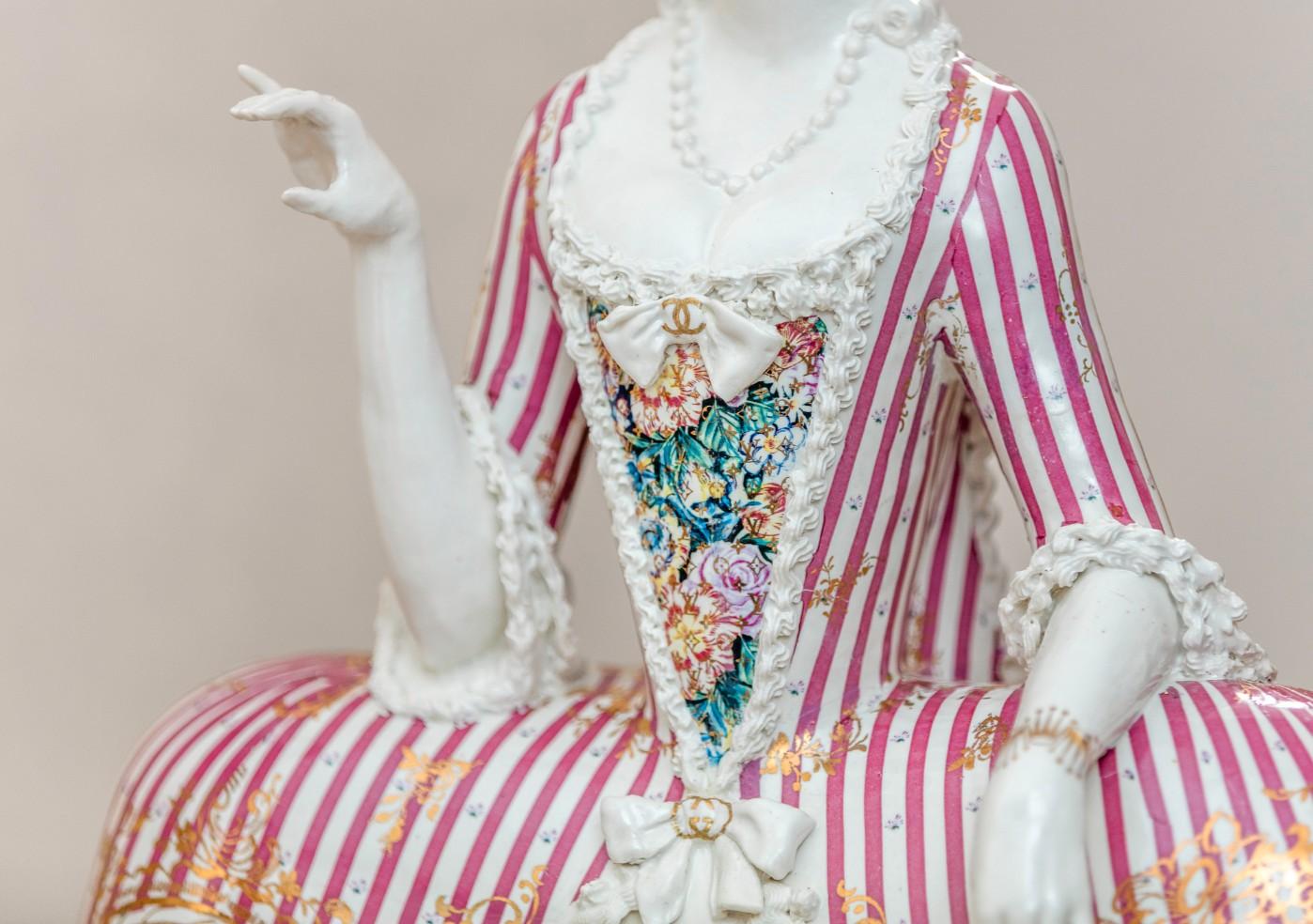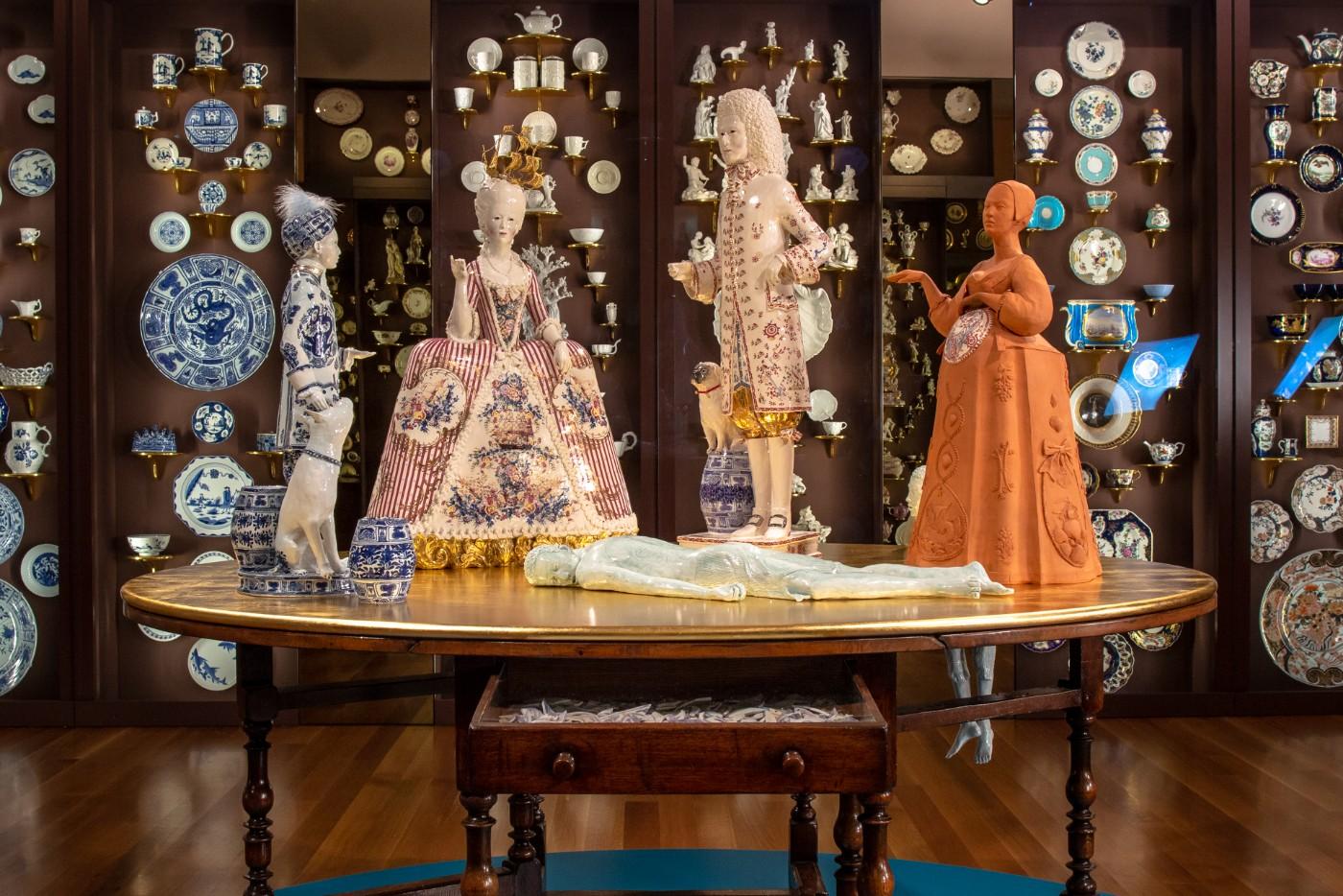British ceramic artist Claire Partington’s site-specific installation Taking Tea is adding a new dimension to the Seattle Art Museum (SAM)’s popular Porcelain Room. Featuring over 1,000 European and Asian porcelain pieces from SAM's collection, the Porcelain Room is a treasure trove of priceless Eastern and Western pieces, with walls lined with glass cabinets showcasing the finest ceramics. Adding context to the stunning collection is the installation of Partington’s (b. 1973) tableau at the center of the gallery, consisting of six porcelain figures taking tea on a gold-topped antique table. Each figure tells a story, and each is made in a specific ceramic style to evoke different aspects of the history behind the European obsession for Eastern porcelain and tea. Through her use of material and symbolism, Partington explores the multi-faceted history of the international tea trade, including issues of appropriation, colonialism, slavery, and the gendered roles associated with tea.
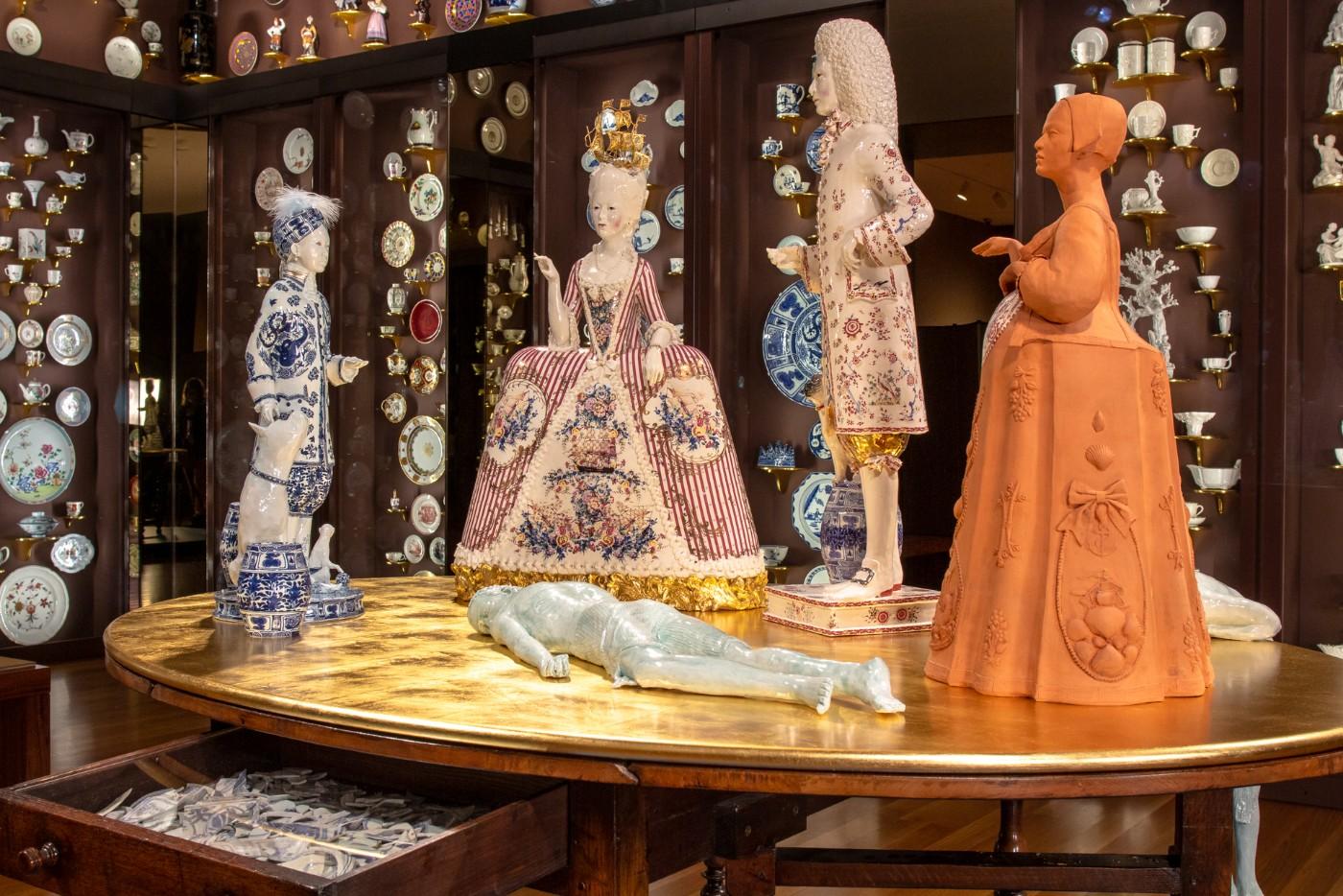
Claire Partington, Taking Tea, 2018. Glazed ceramic.
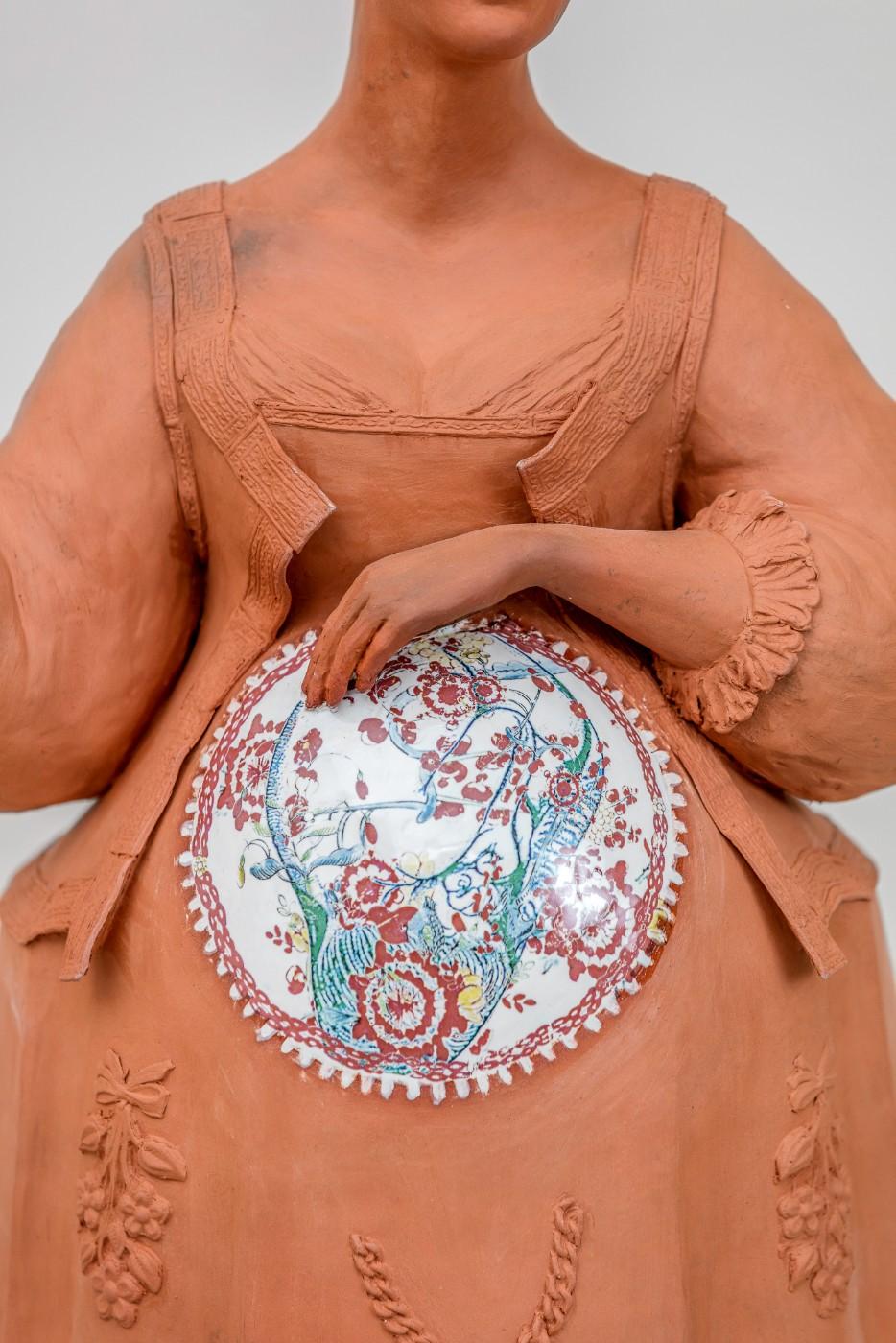
detail of The Maid, from Claire Parington's Taking Tea, 2018

Claire Parington, Taking Tea, 2018
Highly prized in the 18th century as a mark of culture and wealth, porcelain was only affordable to the very rich, requiring vast networks of trade and production, and precipitating trade wars among European nations. Featuring three members of an aristocratic family, their maid, and two sailors, Taking Tea illustrates the different facets of tea and porcelain trade and consumption. The Man of the House mimics the English Bow porcelain style, a 17th-century factory known for imitating Chinese and Japanese porcelain with notoriously uneven quality. A well-dressed gentleman in gold breeches and an imposing wig, he still lacks detail and is eclipsed in quality by his wife. The Woman of the House, the trophy of her home, is an ornate, delicate homage to luxury. She mimics the style of Sèvres, the premier porcelain producer of the 18th Century. Her wide silk skirts, gold tiara and fine jewels proclaim her wealth and status. The Boy mimics the style of Chinese Wan Li porcelain. His exotic ensemble and fine blue and white color scheme mark him as a true treasure, a servant culturally appropriated by this European couple. The Maid resembles a small red stoneware teapot, the first Chinese ceramic to be imported to 17th century Europe, highlighting her utilitarian role. The celadon-glazed Two Sailors are obviously shipwrecked. Ignored by the tea party group, one lies as if washed up on a beach, corpse-like, while the other desperately clings to the tabletop. One of the sailor’s backs is incised with the shipwreck excerpt from Lord Byron’s Don Juan.
Broken porcelain from 17th- and 18th-century shipwrecks is mounted on a gold-backed panel opposite the table, rounding out the story of international trade. While the figures evoke the opulent luxury and gender roles of European consumers, they also hint at the human cost of international trade. The porcelain fragments and artifacts go further, exposing the tragic realities of ocean travel. Some are still covered in barnacles, reminding viewers that sea voyages were often perilous, and that people lost their lives to bring costly porcelain to the rich.
Claire Partington: Taking Tea is on view through December 6, 2020.




